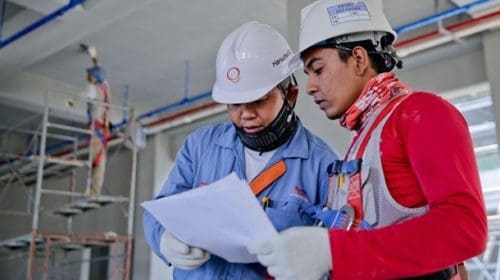In the oil and gas industry, all systems are pivoting towards a digital model. Digitization of workflows, record keeping, and specific tasks change the way independent operators conduct their business. While this digitization creates countless opportunities in the industry, the benefits don’t come easily. Business leaders must learn how to implement digital tools for greater efficiency to experience the success technology can foster.
Forty percent of surveyed executives cited efficiency as the top benefit of a digital transformation, but creating these results for yourself requires preparation. By streamlining your workflows, automating, and innovating, you can better implement digitization for the ease of all employees and customers. This is integral to maintaining a competitive edge in the pandemic economy.
Streamline Your Digital Workflows
But one of the most prominent barriers to digitization for independents is knowing where digitization will be most worth the investment. After all, shifts in technology require employee training, new business practices, and a host of implementation challenges that boost costs. Business leaders in the oil and gas industry are finding that the investment is worthwhile, however, since the potential for digital tools in the workplace to alleviate labor and resource constraints is immense.
That’s because digitization can revolutionize workflows. A digital workflow consists of a job process — any job process — translated to a computer system. This allows for automation, convenient task tracking, broad transparency, and ultimately the increased efficiency of oil operators.
A real-world example might include a digital twin of an upstream production site. Operators can model the status of wells and process equipment through a replica of it produced on computers through sensors, cameras, monitors, and other connected devices. This is the source’s “digital twin,” an environment that can then be used to model, optimize and automate any number of tasks. This is essentially the basis of tech like Honeywell’s Advanced Process Control (APC) systems, which have made their way to several drilling sites.
By translating oil assets into data, you can optimize every level of production. APC technology powers submersible pumps, for instance, that self-adust to maximize production while minimizing electricity use. This is a digital workflow independent operators can apply in the course of increasing efficiency on two levels. First, it saves time and labor that workers could otherwise spend improving the safety and quality of other work. Second, it cuts down on resource use, making for a safer and cleaner world.
Additionally, digital workflows can enhance every other element of an independent operation, from its hiring procedures to its safety measures. Digitization means transparency. Through data, you can view assets and worksites with greater insight into risk factors and efficiency hurdles. From here, you can apply value-boosting improvements while finding ongoing opportunities to automate and innovate.
Automate and Innovate
Any business’s ability to succeed is intertwined with its ability to innovate. This is especially true in the oil and gas industry, where market values have fluctuated so much for just a few years. In the same vein, automation has become essential in everything from managing upstream production to supply distribution. Automation often goes hand-in-hand with innovation, since they both result from digitization strategies, and both are key to an efficient digitization strategy.
Independent operations can start with the digital workflows best optimized for automation. In oil production, this can include the following:
- Drilling operations
- Pipeline monitoring
- Diagnostics
- Pressure and flow management
- Leak detection and risk compliance
The automation potential in these tasks comes through the Internet of Things (IoT) and the availability of artificial intelligence tools that can monitor and adjust systems and equipment for ideal conditions. By nature, this machine precision produces efficiency. That’s because AI can evaluate thousands of variables instantaneously and compare them against existing models. This is useful not just in improving the production outcomes but in reducing downtime as well.
Downtime results as either scheduled maintenance of systems and equipment or due to equipment malfunctions or workplace accidents. McKinsey’s research found that this downtime creates obstacles in oil production that digital tools are uniquely positioned to overcome. To reduce both planned and unplanned downtime, operators need the help of the following digitized systems:
- Data capture sensors and equipment
- Enterprise Resource Planning (ERP) databases
- Data analytics tools
- Staff training and resources
These items allow independent operators to automate and innovate within a supportive digital environment. IoT data capture tools feed real-time insights both up and downstream. Then, ERPs can safely store data for analysis. Added security is essential since growing digitization makes the oil and gas industry more vulnerable to cyberattacks, but fortunately, AI can also support a safer system through constant end-point analysis. As a result, you can reduce the risk of forced downtime due to cybercrime.
Then, never stop looking for new ways to solve problems. Whether your operation is upstream or downstream, you’ll encounter workflow hiccups that available tools cannot resolve. In these instances, operators need to be prepared to innovate. This will entail creating an open environment for brainstorming and new ideas. By their profitability rates, companies with diverse executive boards seem to achieve this more easily.
Automate and innovate to improve your digitization efforts. Your outcomes with implementing these efficiency tools will depend on how well you cultivate employee success with digital resources. Often, the secret comes down to winning employee support with the technology integration from the beginning. Give them a voice as stakeholders, then invest in relevant training. By supporting employees through change, operators gain the benefits of digitization while mitigating a learning curve that might otherwise impact efficiency.
Explore the Benefits of Digitization
The benefits that come from digitization are clear. We’ve seen giants in the industry raise their bottom lines by $40 million through the effective application of information systems. Now, AI and IoT tools offer further incentives for operators looking to streamline their digital workflows. By implementing data-driven solutions, oil and gas companies gain transparency and automation potential. This translates to value.
Automate and innovate as you implement digital solutions to modern industry challenges. In doing so, you can explore the benefits of digitization as it applies to oil production. Improve everything from overhead to safety with these modern tools.
Indiana Lee lives in the Northwest and has a passion for the environment and wellness. She draws her inspiration from nature and makes sure to explore the outdoors regularly with her two dogs. Lee also has experience in owning and operating her own business. Feel free to follow her on Twitter @indianalee3.
Oil and gas operations are commonly found in remote locations far from company headquarters. Now, it's possible to monitor pump operations, collate and analyze seismic data, and track employees around the world from almost anywhere. Whether employees are in the office or in the field, the internet and related applications enable a greater multidirectional flow of information – and control – than ever before.












